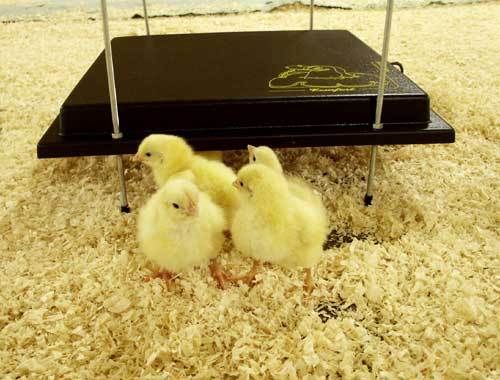When we first started brooding chicks, we invested in a couple of "electric hen" heat pads, since they are far cheaper to run than a traditional heat lamp.

Overall, I would still recommend them, but I've found a few problems with the design:
1) The threaded legs are awfully fiddly to adjust, and leave poles sticking up above the brooder. We had one Hubbard die when it jumped off a perch above the brooder and hit its chest on the top of the leg. After that, I replaced the legs with rope and hung the brooder from the roof of the coop, which makes it far easier to adjust.
2) I left the brooder in the shed last year after the geese had finished using it. The flex was hanging down and our young geese chewed right through it!

3) When I came to switch on our second brooder tonight, I noticed that where the flex enters the body, it had worn through the insulation somehow and shorted out (confirmed by charring and a blown fuse).

So, I know what's inside a normal hen

, I wonder what's inside an electric one!!

Not a great deal as it turns out!!

The metal base plate is held on with glue and rubber sealant, then there is a wire heating element held in place with adhesive backed foil and glued onto a sheet of fibreboard. Underneath the fibreboard is a layer of foam insulation.
It didn't take long to work out that the incoming 240V supply just connects straight onto the heating element. So, I dug out a bit of the foam insulation to make space and drilled a new entry hole for the flex through the top of the unit. I then tied a knot in this to act as a cable grip and re-connected it to the heating element using some 5A choc block.

I then re-arranged the electrics to fit neatly in the recess I'd made in the foam, and filled everything with "sticks like sh*t" to keep it all in place (I seem to use a lot of that stuff these days!

). I also used it to glue the metal base plate back on and seal everything up again.

So there we go - good as new!
I hope this may be helpful to somebody else one day - these things are good, but they're far too expensive to just throw away when they fail!